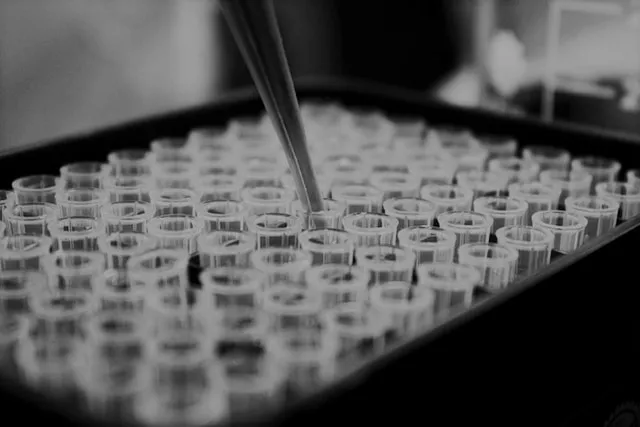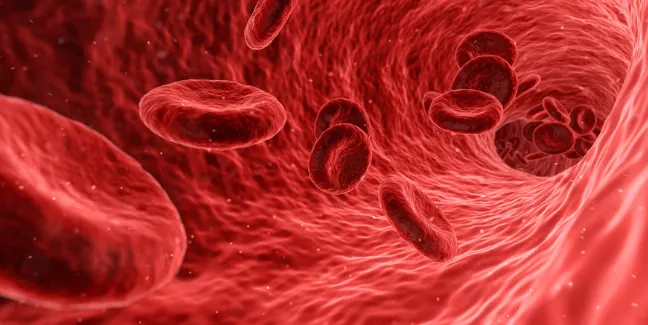By our Scientific Director Dr Ann Smith.
Understanding Sickle Cell Anaemia
Sickle cell anaemia is a genetic blood disorder characterised by abnormal haemoglobin, the protein responsible for carrying oxygen in red blood cells. In individuals with sickle cell anaemia, a genetic anomaly results in red blood cells becoming rigid and assuming a crescent or sickle shape. This prevents the (normally smooth) cells from gliding through blood vessels and reduces their ability to carry oxygen to the tissues. Children born with sickle cell disease inherit a faulty gene from both parents. If both parents have the genetic defect, there is a 25 percent chance that each child will be born with the disease. This condition primarily affects individuals of African, Mediterranean, Middle Eastern, and Indian descent.

Types of Sickle Cell Disease
There are several types of sickle cell disease, including:
Sickle Cell Anaemia (SS): This is the most common and severe form of sickle cell disease. Individuals with this type inherit two copies of the sickle cell gene, one from each parent.
Sickle-Haemoglobin C Disease (SC): People with this type inherit one sickle cell gene from one parent and one haemoglobin C gene from the other parent. Symptoms may be less severe compared to sickle cell anaemia.
Sickle Beta-Plus Thalassemia: These types occur when a person inherits a sickle cell gene from one parent and a beta-thalassemia gene from the other. The severity of symptoms can vary.
Sickle cell anaemia is considered to be the most serious type of sickle cell disease. It is estimated that between 12,000 and 15,000 people in the UK have sickle cell disease and that approximately 1 in 79 babies carries sickle cell trait.
Diagnosis of Sickle Cell Anaemia
Blood testing can detect haemoglobin S, the defective form of haemoglobin. Blood samples from these patients have large numbers of sickled red blood cells – the hallmark of the disease.
Many countries have implemented newborn screening programs to identify sickle cell disease early. A blood sample is taken from the baby’s heel in a pinprick test shortly after birth, and if the screening test is positive, further diagnostic tests are conducted. Pregnant women in England are also offered screening to find out if they are a carrier and to determine if their baby is at risk.
Sickle cell disease can also be detected in a developing foetus using amniocentesis, a procedure in which a sample of fluid from around the baby is taken for testing. This can determine whether the foetus has sickle cell disease or carries the sickle cell gene.
Recently, a technique used in conjunction with in vitro fertilization, called pre-implantation genetic diagnosis (PGD) has been developed. This enables parents who carry the sickle cell trait to test embryos for the defective gene before implantation and to choose to implant embryos free of the sickle cell gene.
Symptoms of Sickle Cell Anaemia
The symptoms of sickle cell anaemia can vary in severity and may include:
Anaemia: Sickle cells have a shorter lifespan, leading to a low red blood cell count and reduced oxygen-carrying capacity.
Pain Crises: Sickle cells can block blood flow, causing severe pain episodes known as crises. These can occur in various body parts.
Fatigue: Anaemia and reduced oxygen supply can result in chronic fatigue and weakness.
Infections: Sickle cell anaemia weakens the immune system, making individuals more susceptible to infections.
Long term: Those who have sickle cell anaemia are at a heightened risk of suffering organ damage, delayed growth, vision problems and stroke.
Current Treatments for Sickle Cell Anaemia
The current treatments for sickle cell anaemia aim to manage symptoms, prevent complications, and improve quality of life. Those who have sickle cell disease are encouraged to manage their self-care such as ensuring they drink plenty of fluids and stay warm in order to avoid painful crises. It is also important to avoid anything that personally triggers painful crises and to have regular vaccinations to reduces the chances of catching an infection.
Treatments at this time for sickle cell anaemia include:
Pain Management: Pain medications are prescribed to alleviate pain during crises, such as paracetamol and ibuprofen.
Blood Transfusions: Regular blood transfusions can help increase the number of healthy red blood cells and improve oxygen supply.
Medications: Medications like hydroxyurea are prescribed to reduce the frequency and severity of pain crises by helping to prevent sickling of red blood cells.
Stem Cells Treatments : Sickle Cell Anaemia and What Does the Future Hold?
Stem cell transplantation is an accepted form of treatment for severe cases of sickle cell disease and offers the only possibility of a cure. The treatment involves the use of chemotherapy to destroy the impaired blood making bone marrow cells and replace them with healthy donor stem cells. The healthy stem cells may be sourced from sibling or matched unrelated donor bone marrow, peripheral blood (following the use of drugs to coax the cells out of the bone marrow into the blood) or from umbilical cord blood
Stem cell research holds promise for the treatment of sickle cell anaemia. Researchers are exploring the potential of using various types of stem cells, including:
Gene therapy offers promise of a cure. Researchers are considering the possibility of correcting the defective gene in bone marrow from patients. The patients then receive their manipulated cells back following high dose chemotherapy designed to wipe out their defective bone marrow. The aim is to restore the production of normal haemoglobin. This work has currently reached early clinical trial phase but is not yet proven as effective. Thanks to the promising pioneering work being done into cord blood stem cell research with sickle cell anaemia, we have customers such as Victoria Ekanoye who has sickle cell anaemia herself and has chosen to store with us should her family be able to use the stem cells collected in future.
The future of stem cell research for sickle cell anaemia looks promising. Clinical trials and experimental approaches are underway to develop safer and more accessible stem cell treatments. However, further research and advancements are needed to optimise the efficacy and safety of stem cell therapies for this condition.
Sickle Cell Awareness
September marks Sickle Cell Awareness Month and 19th June marks World Sickle Cell Day. These events, along with new NHS training programmes are critical in helping medical staff, carers and the wider public to better recognise and understand sickle cell disease, in order to provide the best care possible when patients require it. These awareness events are also important to bring much needed attention to causes such as blood donation projects which aim to highlight the lack of ethnically matched blood that is donated but is required to provide life saving treatments for those with sickle cell anaemia. The fundraising brought about on these events also makes up a significant portion of money raised for research into more and better treatments for sickle cell disease in future.
For further information, visit the Sickle Cell Society website: https://www.sicklecellsociety.org/
Rate this article:









